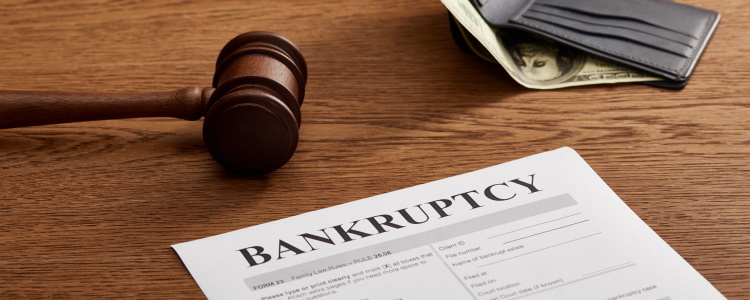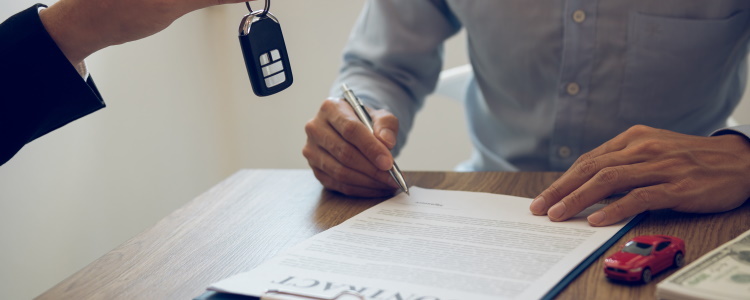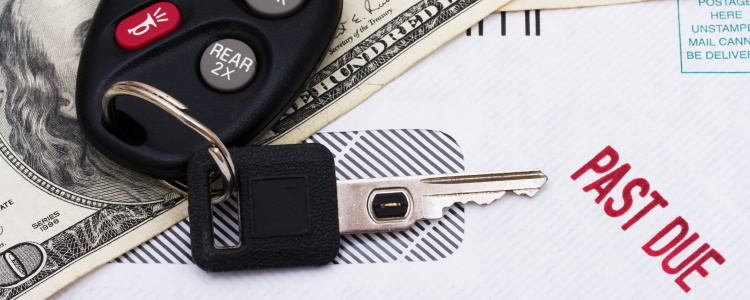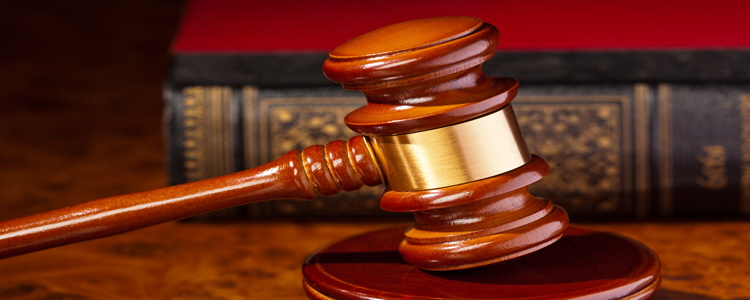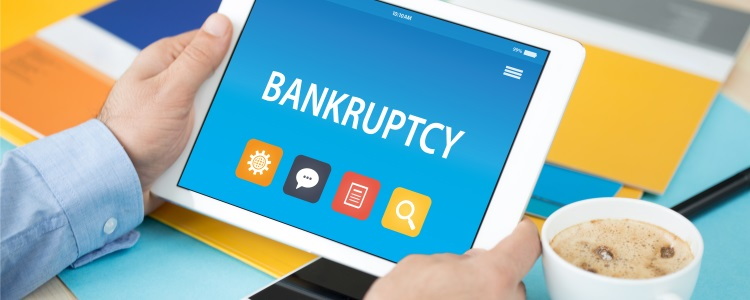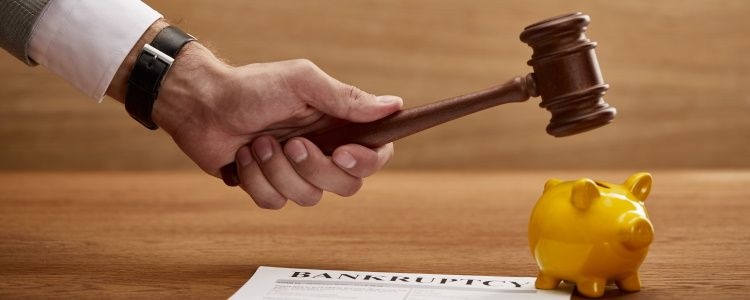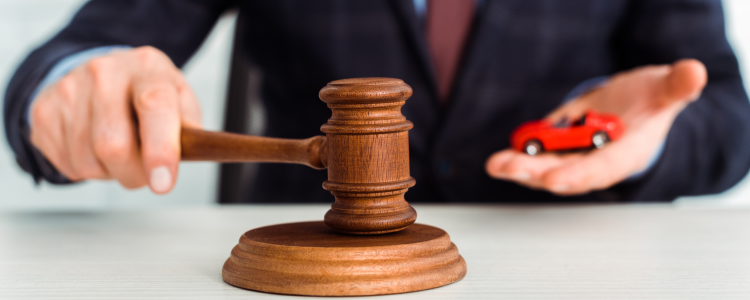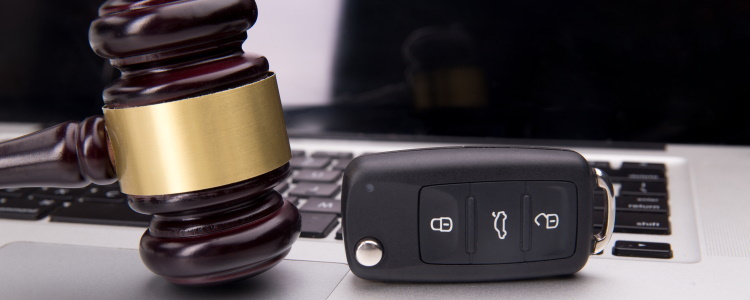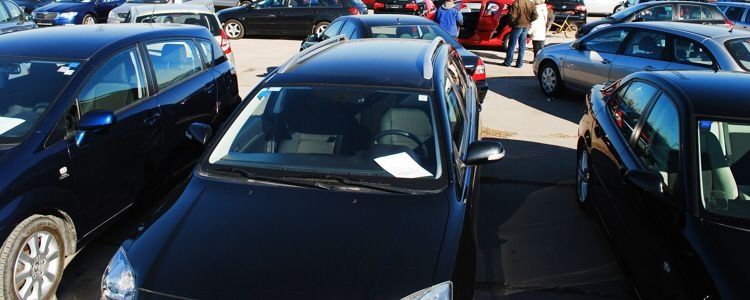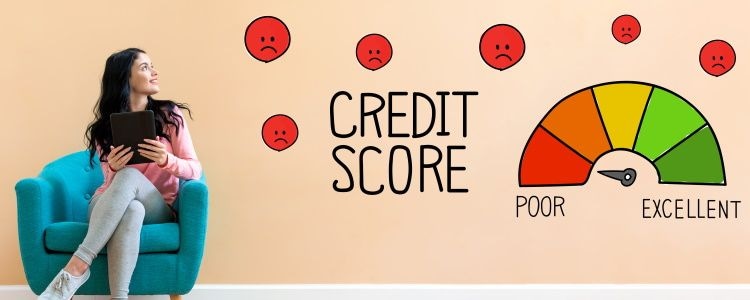Anyone that experienced a Chapter 13 bankruptcy knows it can be difficult because they last a long time. What happens when you need a car at that time? When it comes to being able to make a big purchase like a vehicle, the task can be daunting even without having to worry about bankruptcy. However, Auto Credit Express is here to help you through the process.
Open Chapter 7 vs. Open Chapter 13
 In case you're not familiar, there are two major differences between a Chapter 7 and Chapter 13 bankruptcy. The first is that while Chapter 7 wipes your debt away instantly, it leaves a shadow on your report for 10 years. An auto loan will only be considered after the Chapter 7 bankruptcy is complete and you have your 341 papers.
In case you're not familiar, there are two major differences between a Chapter 7 and Chapter 13 bankruptcy. The first is that while Chapter 7 wipes your debt away instantly, it leaves a shadow on your report for 10 years. An auto loan will only be considered after the Chapter 7 bankruptcy is complete and you have your 341 papers.
However, with Chapter 13 you will be making set monthly payments to correct your debt. This can take anywhere from three to five years but only stays on your record for about 7 years – including the 3 to 5-year repayment period. This means you have options to acquire new debt during Chapter 13 that you don't with Chapter 7.
Because of the open repayment period with Chapter 13, sometimes needs arise that can't be avoided and can't wait. When it comes to acquiring a better vehicle, there are dealers out there that can help you!
Getting an Auto Loan With an Open Chapter 13
In a bankruptcy, it is possible that your current vehicle may have been taken back by the lender. If that's the case, you need a car now to get to and from work, home, the store, doctors, and any other place you need to go.
Not every dealer is prepared or willing to help you replace your vehicle. That's where we step in. Finding dealerships that work with bankruptcy cases only take you about three minutes. That's how long it takes to complete our quick and painless auto finance application.
Once you've completed that, we will contact you to verify your information is correct and then set a time for you to meet one of our dealers in your area.
When you meet them you'll need to bring with you:
- Your account trustee's approval
- Your proof of income
- Your ID
From there you and the dealer will determine exactly how much you can afford so you don't go back into debt again. Then they'll help you find a vehicle that will give you the most worth with the least cost. Finding a used vehicle that is only a few years behind the current model will allow you to pay less for more car.
What Can Chapter 13 Do for Your Auto Loan?
Depending on your situation, filing a Chapter 13 bankruptcy can do a lot for your car loan. Because a Chapter 13 bankruptcy is so long – three or five years – there are processes in place to help you keep your existing auto loan, or even get a new one if something unexpected happens to your current vehicle.
Chapter 13 bankruptcy can be especially beneficial if you are behind on your car loan payments, or owe more for your loan than the vehicle is worth. If you're in either of these situations, Chapter 13 can help you manage your situation and keep your car.
Keeping Your Auto Loan in Chapter 13
The first thing that happens when you file for bankruptcy is that an automatic stay goes into effect, which halts all collection attempts on you until the details of the bankruptcy can be worked out. When you file Chapter 13, you're saying that you can't afford to pay for everything right now, but you're willing to work on it.
 Chapter 13 is called a repayment bankruptcy and you're assigned a trustee by the court to manage your finances during the process. Your trustee works out a budget and a repayment plan you have to stick to. Because you're given time to pay your creditors, you typically get to keep property such as a reasonably-priced vehicle.
Chapter 13 is called a repayment bankruptcy and you're assigned a trustee by the court to manage your finances during the process. Your trustee works out a budget and a repayment plan you have to stick to. Because you're given time to pay your creditors, you typically get to keep property such as a reasonably-priced vehicle.
With the automatic stay in effect, your trustee can evaluate your auto loan situation and help you decide on a smooth route to take. If you're planning on keeping your car loan (or lease) when you file Chapter 13 you typically have two options, depending on the equity in your vehicle and if you're current on payments.
- Catch up on your auto loan through your repayment plan. If you were staring down the barrel of a repo due to late or missed payments when you filed for bankruptcy, you have the chance to add those missed payments to your bankruptcy repayment plan – this means a chance to bring your loan current! In order to stop the repossession for good, you have to stay current on both your loan and your repayment plan. If you're late with a payment again, even if your bankruptcy is successfully discharged, your lender has the right to repossess.
- Cramdown negative equity. If you owe more on your loan than the car is worth, you're in a negative equity position. If this is the case, you may be able to cramdown your auto loan so that you only pay for the fair market value of the vehicle. The remaining amount of negative equity is added to your unsecured debts and may be wiped out if you successfully complete your Chapter 13 bankruptcy. Cramdowns are only available in this bankruptcy chapter, and you must have owned your car for at least 910 days (two and a half years) prior to filing for bankruptcy.
When You Can't Keep Your Car in Chapter 13
If your auto loan isn't eligible for a cramdown when you file for Chapter 13, or you don’t want to add the payments to your repayment plan, you do have the option to voluntarily surrender your vehicle. If you don't think that you can keep up with both your car loan and your repayment plan, this may be a better option than allowing the lender to send out a tow company.
If you give your car back to the lender, you have to pay for any loan amount that remains after the vehicle is sold, called a deficiency balance. Paying this amount may be ultimately less expensive when you surrender the car yourself because you're skipping out on all the costs associated with repossession. A traditional repossession involves having to pay for storage and recovery fees, but a voluntary surrender doesn’t include these.
Getting a More Affordable Car Loan During Chapter 13
Since a Chapter 13 bankruptcy lasts for either three or five years depending on your situation, there's a policy in place to allow you to take on a car loan in an open bankruptcy. This is a benefit when you can't afford to keep the vehicle you have going into your Chapter 13. If you surrender it and then find that you need another set of wheels, it's typically possible to get a bankruptcy auto loan.
The process of getting a car loan during an open Chapter 13 starts with finding a lender that can work with borrowers facing bankruptcy or other challenges. This is typically a subprime lender that works through a special finance dealership.
Once you find a subprime lender, you need to get a sample buyer’s order from the dealer stating all the terms of the contract, including the highest possible interest rate you may qualify for, and the words "or similar" next to the make and model of the vehicle you chose. This caveat allows you to continue the process without starting over if the specific car your buyer’s order was drawn on has already sold.
If your trustee approves of the sample contract and your need for a car, they file a Motion to Incur Debt with the court. Once it's approved, you get an Order to Incur Debt from the court and you're able to return to the same dealership to finish your auto loan paperwork.
Finding a Bankruptcy Auto Loan
If you're looking for a dealership with the resources for bankruptcy auto lending, we've got you covered! Auto Credit Express has been connecting bankruptcy borrowers with local dealerships that are ready to get them into a vehicle for over 20 years. Our process is fast, free, and never comes with any obligation. Simply fill out our auto loan request form and we'll match you with a dealer who works with lenders that can handle bankruptcy car loans!

